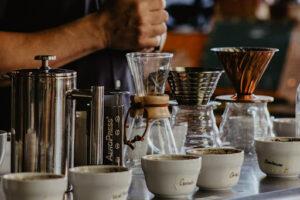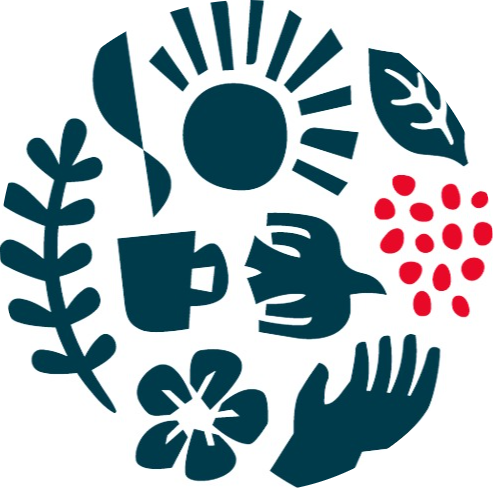Learning coffee 101 may become your newest hobby if you are looking for an exciting new activity to take on. Everyone has a coffee story, no matter where they are starting. But if you are new to coffee brewing and on the search for that perfect cup, look no further! It is so easy to get overwhelmed when starting, but it does not have to be. We will help you learn the science behind coffee brewing and sample the different ways of making your best cup of coffee come true.
What Type Of Brewing Suits You Best?
When considering what type of brewing suits you best, it is important to understand the different ways to make coffee. From traditional drip to pour-over, French press, and cold brew, there are many great options out there. If you’re after a smoother cup with deeper flavor notes, pour-over or French press might be best for you. For convenience, drip brewers are easy and fast to use. Cold brew is also a great option and produces a much less acidic cup – perfect if you have a sensitive stomach.
With so many different brewing options available, taking the time to consider which one fits your lifestyle will ensure that every morning starts off right.
Types Of Brewing Methods
Drip
Drip coffee, also known as filter coffee, is one of the most popular and common ways of brewing coffee. The process involves slowly dripping hot water on a basket filled with grounds to create an aromatic and strong-flavored brew. Unlike some other brewing methods, drip coffee is notably high in caffeine levels – making it the perfect choice for those looking for a powerful jolt of energy.
Pour Over
What makes this method stand out is that it requires patience and precision in addition to roasting and grinding high-quality coffee beans. The paper filter used in pour-over also helps remove extra oils and residues, giving the brew an exceptional cup of coffee with a full body flavor. And all you need to do is start with a slow and steady pouring motion. This method offers control over the entire coffee-making process giving you complete freedom on how simple or elaborate you want your coffee to be.
French Press
Brewing with a French Press is simple. First, fill the cylinder about halfway with hot water and add your preferred amount of coarsely ground beans. After all that is set, let steep for around four minutes before pushing the plunger into place to capture the grounds; this part is key as it strains out all those complex notes that make this form of brewed coffee so special.
Siphon
Siphon is a brewing technique that uses a vacuum coffee maker. It involves two chambers – one filled with water and heated to create vapor pressure which forces hot water mixed with the coffee grounds upwards and then pulled downwards by gravity. The brewed coffee is passed into the bottom chamber and provides a flavorful cup of coffee. Attention must be paid to following the steps correctly, as this is not a fast-brew method.
Espresso
The espresso brewing method has become a popular choice for coffee lovers. It is known for producing dark and rich coffee that is incredibly aromatic. Espresso coffees are thick and have a strong flavor, this is due to the roast of coffee beans that are used. Roasting coffee beans for a longer period gives espresso coffee its distinctive texture and aroma.
With this method, it is possible to brew highly concentrated caffeine, which makes it a favorite among people who love its caffeine hit! Furthermore, espresso-brewed coffee has an enticing crema layer on the top that adds to its flavor.
Aeropress
The AeroPress method is a popular and preferred choice for making coffee. It has smooth and rich-tasting results, with the ability to achieve an espresso-like taste. The method also requires minimal cleanup and is simple to use, giving users great-tasting coffee in just a few minutes. It uses pressure to brew the coffee, creating a truly unique flavor.
Bialetti
The Bialetti is a more advanced version of the percolator. It consists of three chambers with a funnel-shaped metal filter between them. When heated, pressure builds up and forces the water from the lower chamber to the upper one, where it mixes with the coffee grounds and produces an espresso-like brew.
Chemex
The Chemex is a favorite among coffee makers for its simplified pour-over brewing method. Its filters are bonded and heavier than standard paper filters, giving users a clean cup of coffee that some describe as tea-like. Delicious and easy to use, the Chemex offers up a delightful brew every time.
Nel Drip
Brewed correctly, Nel drip coffee can be an incredibly romantic and enjoyable experience. As you fill the cotton flannel filter with freshly ground beans and then pour water into the narrow sleeve, there is a sense of ritual invigoration. To differentiate it from other pour-over methods, Nel drip coffee uses a cotton flannel filter instead of paper. It gives the resulting drink a unique richness and depth that highlights all of its flavors.
Cold Brew Bottle
This is just like an infused water bottle but with a mesh filter insert for adding grounds. It is as simple as adding your favorite coffee grinds to the insert, pouring cold water into the bottle, sealing the lid, and leaving it in the fridge. After a few hours of steeping those grinds, you will have yourself a perfectly brewed pot of cold brew that tastes even better than what your local café has to offer.
New Orleans Style Cold Brew
New Orleans style cold brew has quite a unique history. The method of brewing is no different than a regular cold brew, but the key difference lies in the ingredients used. If you want to make true New Orleans style cold brew, you’ll need 1 part coffee beans and 1 part chicory root that needs to be steeped in a jar with cold water for 12 hours. New Orleans Style cold brew is a little more woody and nutty than other cold brew coffee.
Other Variables To Consider
Another “coffee 101” thing to remember is that great coffee requires more than just quality beans – it requires all the pieces of the puzzle to come together for success. The roasting, grinding, brewing method, water temperature, and ratios are all equally important aspects of making amazing coffee.
Roasts
Roasting coffee beans is an art form. Green coffee beans are harvested and then roasted to perfection in a process that involves dry heat and constant rotation to ensure even charring. From light brown to black, each stage of roasting imparts its unique flavor and aroma.
Grinds
To make the perfect cup of coffee, freshly ground beans are essential – and no matter how convenient pre-ground beans may be, they just don’t compare to the freshness and flavor of newly ground beans. Invest in a quality grinder and stock up on your favorite whole coffee beans to enjoy the best cup of coffee.
Water Temperature
The chemistry of your water plays a critical role in the quality of your coffee. Hard water has plenty of calcium and magnesium that helps to increase the potency of the grounds, but it can also cause issues for your coffee maker. Soft water is high in sodium and low in magnesium, resulting in a weaker cup of joe. Understand the characteristics of your water to maximize the flavor of each cup.
Choose The Right Specialty Coffee For Your Favorite Brewing Method
When choosing the right specialty coffee at Cherri Cafe for your favorite brewing method, it’s important to consider flavor profiles, grind size, and the type of bean – all of which can be customized to your taste. With a selection of premium coffees that have been created and handled with care, you can enjoy the perfect cup every time. Visit us to see our best selections of quality coffee beans.




